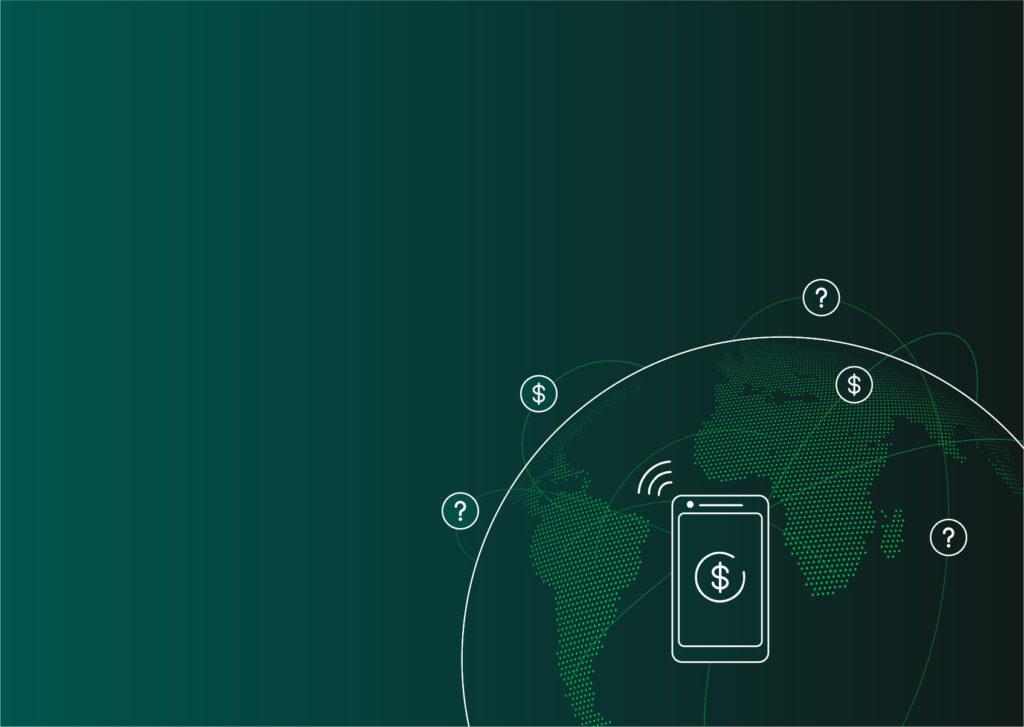
Topics
- Consumer Protection
- Responsible Data Practices
- Responsible Digital Finance
- Responsible Product Design and Delivery
- Women
Series
This quote by Chetna Sinha from Mann Deshi Bank became one of the defining comments at the July 2023 convening of the Responsible Finance Forum (RFF) that took place in Bengaluru, India. The RFF, a global convening platform on responsible inclusive finance, met in person for the first time in four years, bringing together leaders from around the world to discuss key issues in responsible finance. Sinha’s comment, made during one of the featured panel discussions, highlights the importance of understanding and addressing the normative and structural barriers that keep women excluded and underserved in the financial sector. We need to invest more in understanding the unique risks women face and ensuring product design and redress mechanisms help to mitigate these risks, especially for digital financial services (DFS). The reality is, it’s not so much about changing women’s behavior, rather, it’s about changing the system.
We need to invest more in understanding the unique risks women face and ensuring product design and redress mechanisms help to mitigate these risks, especially for digital financial services.
While the proliferation of DFS has substantially increased inclusion, this increase has also expanded the scope and impact of risks including fraud, data misuse, a lack of transparency, and inadequate redress mechanisms. These risks are especially high for women; women tend to be less digitally literate and, as a result, the impact of fraud and other data issues are different and more consequential than for men. And because women are more vulnerable, they have less capacity to cope, and recurring shocks lead to lower resilience and a reduced ability to recover. Research conducted by CGAP in Cote d’Ivoire found that women were more likely to lose money to scams (16 percent of women compared with 12 percent of men), have more difficulty navigating product menus on their phones (25 percent of women compared with 17 percent of men), and were less likely to understand digital financial products (22 percent of women compared with 18 percent of men). Given these greater risks, it was heartening to see that the vital need to include women and, importantly, suggestions on how to more safely include them, was a frequent topic of discussion throughout the RFF convening.
It is interesting to note that in 2009 when the RFF was conceptualized as a forum for investors, donors, financial services providers, and sector experts, the original consultation draft referred to the need for “coordinated public and private sector interventions that encourage and assist FSPs and their clients in improving their understanding and approaches, practices, and behaviors that can eventually contribute to creating more transparent, inclusive, and equitable financial markets”. If inclusion has been part of responsible finance from the start, why then are we not overtly and proactively focusing on including women?
Why Are DFS Risks Greater for Women?
For the most part, digital financial products and services do not take into account the difference in women’s needs and capabilities relative to men’s, thereby increasing the risk to women of exclusion and misuse. If we do not urgently address these risks, many of the recent gains in increasing women’s inclusion could be lost.
A growing digital divide.
Due to pervasive gender norms, women are left out of the system more than men – many do not have formal identification and/or do not own their own phone which results in lower digital and financial capability, and consequently different and smaller data trails. GSMA’s fourth mobile gender gap report shows that women’s digital inclusion is slowing across low- and middle-income countries for the second consecutive year, indicating worrying gender gaps in mobile phone ownership and usage, internet usage, digital skills and awareness, and adoption of digital innovation.
Given that women are not well represented in use cases and data scientists do not research women’s experiences, they are often excluded or underserved resulting in reduced economic opportunities and other challenges.
Product design often excludes women.
While the increasing use of algorithms and artificial intelligence (AI) is allowing service providers to reach and serve more people than ever before, because historical data is used to train AI models and the differences between women and men are usually not considered in the design of AI, there is often an algorithmic bias against women in financial models. Given that women are not well represented in use cases and data scientists do not research women’s experiences, they are often excluded or underserved resulting in reduced economic opportunities and other challenges, ultimately perpetuating gender inequality.
Inadequate redress mechanisms and analysis.
Women tend to have less experience using DFS than men. They also tend to have less voice and agency, which translates to less confidence in using redress and complaint systems. Even when they do file a complaint, they may lack the resources to be able to wait for resolution. CGAP’s research in Cote d’Ivoire found that women are less likely to contact a provider if there is a problem (10 percentage points) and to know how to do this (5 percentage points). In addition, agents were 9 percentage points less likely to act on a woman’s complaint. Furthermore, there is a lack of data to understand how data breaches impact women compared to men.
So, What is Needed?
How can we address the risks that digital financial services pose for women to create a more inclusive, fair, and equitable digital financial system? And in doing so, be truly “responsible”? Below are several suggested areas for focus:
1. Better information and understanding of women and the constraints to using DFS.
We need a greater understanding of the needs, experiences, capabilities, and preferences of women, as well as the unique constraints they face. To go back to Chetna Sinha’s comment, our focus should be on educating bankers, not women. Providers need to understand what impacts women’s ability to access DFS – including mobility constraints, digital and financial literacy, mobile phone ownership, low bargaining power, income limitations, privacy issues, etc., and consider the overall context of women’s lives – their age, marital and parental status, geography, education, health, income, etc. when designing and delivering financial services.
To do this, primary and secondary research is needed. This means speaking to female clients and potential clients about their financial needs, and how they use financial services or why they do not use them. It also requires ongoing collection and analysis of financial service provider (FSP) portfolios, regulatory reports, complaints, and other data to identify and track risks that disproportionately affect women’s use of DFS. And of course, underlying all of this, we need to understand and consider how gender norms impact the behavior of all actors in the system, not just women’s behavior.
2. Improved data and measurement of women’s use of DFS and the benefits and risks.
We need a lot more and a lot better data, and we need to measure outcomes to know whether women are benefiting from using DFS.
- Demand data (e.g., services used, satisfaction, outcomes, complaints, dormancy) is key to understanding how women use and benefit from DFS, including higher income, economic empowerment, and increased agency. These data can also show the risks women face from using DFS; for example, increased intimate partner violence or reduced bargaining power in their households. To mitigate the risks that disproportionately affect women, we must track consumer protection metrics and women’s use of, and effectiveness of, recourse mechanisms.
- Supply data (e.g., account ownership, transaction volume, frequency of usage), used alongside demand data, supports DFS providers to design services, and regulators and policymakers to develop and enact policies, aimed at increasing women’s digital inclusion. Better data also improves our understanding of how greater inclusion of women translates to better performance for DFS suppliers through increased retention, the ability to cross-sell, and strong customer loyalty. With better data, policymakers can make policy changes to create powerful incentives for DFS providers to serve more women. Measuring outcomes helps to develop new protections and responses that can strengthen the resilience of women, suppliers, and regulators.
3. Increased capacity of women and other actors.
To increase women’s digital inclusion and to address the disproportionate risks women face, there are two areas of support needed to build:
- The capacity of women to effectively use DFS and digital technologies and to avoid or manage the corresponding risks. Advocating for and investing in developing women’s financial capability is essential, including ensuring basic numeracy and literacy as well as increased confidence using DFS and digital tools. Women also need to develop trust in the technology, and for this, we must apply a tech-touch balance. Customer service officers play an important role in helping women build knowledge, skills, habits, and importantly, trust. This requires not only intention but the commitment of human and financial resources.
- The capacity of FSPs, regulators, and other market actors to understand women’s needs and capabilities and to use this knowledge to design better products and policies. We need to increase the capacity of providers, regulators, and others in the DFS ecosystem to ensure products and policies work for women.Increasing FSP’s capacity to link customer data and financial results increases their understanding of how women use, or don’t use, services. Using sex-disaggregated user and transaction data could help, for example, to reduce biases in algorithms. In 2016, the Better Than Cash Alliance (BTCA) developed guidelines for DFS providers to engage responsibly with clients. The guidelines include the need to ensure a fair recourse system for dealing with complaints. Knowing that fewer women use recourse mechanisms, BTCA intentionally put women at the center of their guidelines.Policymakers and regulators also need increased capacity. Protecting consumers is in the best interest of the financial system and we must elevate consumer protection issues and inclusion rather than see them simply as compliance issues. For example, the Bangko Sentral Pilipinas (BSP) Philippines developed an effective solution to democratize access to complaints and redress through a chatbot called BSP Online Buddy (BOB) and in doing so, increased access to women. BOB provides a systematic way of gathering data that addresses access and use issues women face with redress systems.
4. Collaborate across stakeholder groups.
To achieve a safe and inclusive ‘responsible finance ecosystem’, all stakeholders need to collaborate and develop a system where ‘Consumer Protection by Design’ practices are firmly accepted. This requires a shared vision between public and private sectors to develop inclusive digital infrastructure and strong consumer protection mechanisms that ensure women are included. Importantly, we need to include working with and sensitizing men to the inequities of the digital world. Encouraging communities and local leaders to champion women’s digital inclusion and creating peer learning platforms to share and exchange knowledge will also contribute to increasing women’s inclusion.
It is time to take the onus away from women and instead focus on the systems in place and the behavior of other actors that currently exclude women from using DFS.
It is time to take the onus away from women and instead focus on the systems in place and the behavior of other actors that currently exclude women from using DFS. As Michael Schlein said in his remarks at the RFF convening, “We have more powerful tools at our disposal to create a better, more resilient, more inclusive world than ever before. We need to seize this once-in-a-lifetime moment. Together, we can help the most vulnerable build their resilience against the challenges of today – and reap the benefits of the digital economy tomorrow.”










